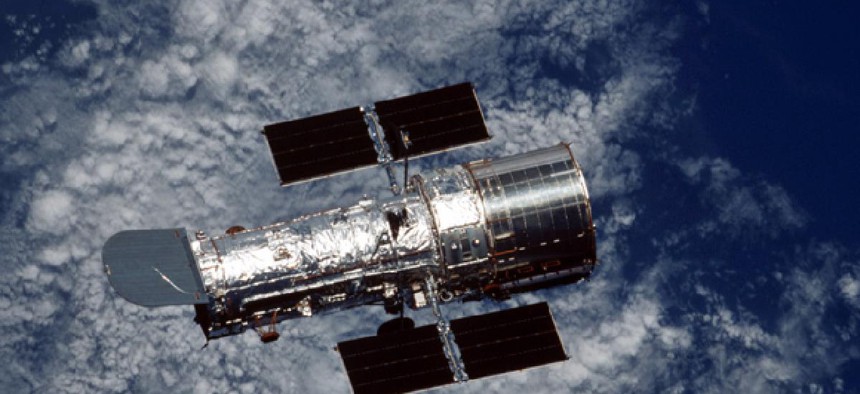ATLAST: The gargantuan telescope designed to find life on other planets

The Hubble Telescope NASA
We finally know what kind of telescope we need to see other earth-like planets. And we're getting ready to build it.
Twenty years ago, in the year Bill Clinton was elected president, scientists first confirmed the existence of a planet outside our solar system. Now, we know there are thousands of other planets just in our galaxy, even if we've only detected them indirectly. We also finally know what it's going to take to glimpse an exoplanet, to actually see the places that might harbor life like ourselves (or otherwise). And the telescope that will eventually do so is on the drawing board. It has a profound name: ATLAST.
During the last three years, we have learned that our galaxy is teeming with planets. Since its launch in 2009, NASA's Kepler Mission has discovered more than 2,200 planet candidates orbiting distant stars in the Milky Way. Every year that goes by brings new exoplanet data, and new reasons to think that planets are a commonplace phenomenon in our universe. And yet, pressing questions about these planets remain. We aren't yet sure how many of them are capable of supporting life. The early data from Kepler indicates that as many as one in ten stars has a planet around it that can host liquid water on its surface. If that number holds up, then our galaxy could be home to more than ten billion watery planets, each a potential home for microbes, plants, or even intelligent beings like us. Some may be so close that we could use telescopes to detect signs of life in their atmospheres. The possibility that undiscovered Earths are hiding in every corner of our galaxy is completely reorienting the future of space science. Astronomers sense that they are on the brink of an epochal discovery, and they are keen to build the telescopes that will enable it.
The Space Telescope Science Institute in Baltimore, Maryland is at the leading edge of this effort. The Institute runs science operations for the Hubble Space Telescope, the most far-seeing instrument ever deployed by humans. The Hubble has had quite a run over its twenty-two years of service, but it is beginning to show its age. In 2009, NASA astronauts serviced the iconic telescope in orbit for the fourth and final time, outfitting it with a new camera and fresh batteries. Still, it's unclear if the Hubble's sensitive instruments can weather another decade of exposure to cosmic rays. Like the Voyager space probes, the Hubble is drifting slowly toward retirement.
The Institute is currently preparing for the launch of Hubble 2.0 -- the James Webb Space Telescope-- a massive infrared instrument that will be one hundred times more powerful than its predecessor. Unlike the Hubble, the James Webb will be difficult, if not impossible, to service. The delicacy of the Webb's infrared sensors require that it be positioned one million miles from Earth, which is too far for tune-ups. Without the benefit of regular maintenance, it is only expected to last five to ten years.
>Because these machines take so long to build, the Space Telescope Science Institute is already planning for Hubble 3.0. A small working group at the Institute is starting to sketch the conceptual outlines of Webb's successor, a still larger space observatory called the Advanced Technology Large-Aperture Space Telescope (ATLAST). This telescope is being designed with a very special purpose in mind: to discover life on planets that orbit other stars.


